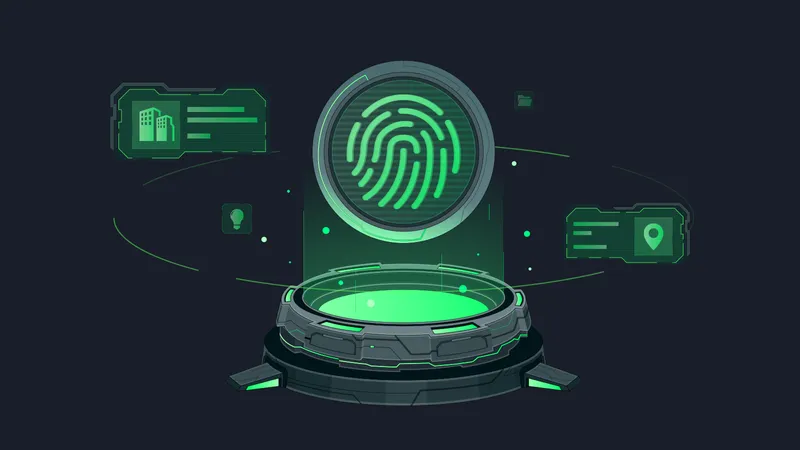Meskipun Web3 dan identitas terdesentralisasi telah ada selama beberapa tahun, kita harus memberikan kredit kepada Sam Altman, pendiri OpenAI dan ChatGPT, atas proyek pribadinya, Worldcoin. Pada 2023, peluncuran Worldcoin (WLD) berhasil menarik perhatian besar ke sektor ini, menunjukkan potensi teknologi ini dalam dunia terdesentralisasi Web3 dan blockchain.
Apa Itu Identitas Terdesentralisasi?
Dalam dunia Web3, identitas terdesentralisasi (Decentralized Identity/DID) adalah pergeseran dari sistem manajemen identitas terpusat ke model di mana Anda, sebagai pengguna, memiliki kendali penuh atas persona digital Anda. Tidak seperti sistem tradisional yang dikelola oleh institusi (seperti platform media sosial atau lembaga keuangan), DID memberi Anda kemampuan untuk memiliki dan mengendalikan data pribadi Anda sendiri, sehingga meningkatkan otonomi pengguna dan keamanan digital.
Pentingnya identitas terdesentralisasi dalam Web3 tidak dapat dilebih-lebihkan. Dengan semakin terintegrasinya interaksi digital dalam kehidupan sehari-hari, kebutuhan akan cara yang aman dan privat untuk mengelola informasi identitas semakin mendesak. DID berfungsi sebagai tulang punggung kepercayaan dan privasi dalam ekosistem Web3, memungkinkan interaksi yang aman, transparan, dan berorientasi pengguna. Teknologi ini menjadi fondasi untuk membangun masa depan digital yang lebih demokratis dan berpusat pada pengguna.
Bagaimana Cara Kerja Decentralized Identifiers (DIDs)?
Pada inti identitas terdesentralisasi adalah teknologi blockchain. Blockchain bertindak sebagai basis data yang terdesentralisasi dan tahan manipulasi di mana DID dicatat, memastikan bahwa data identitas Anda tidak dikontrol atau dimonopoli oleh entitas tunggal mana pun. Pengaturan ini meningkatkan keamanan dan keandalan identitas digital, membuatnya tahan terhadap penipuan dan pencurian.
Mekanisme DID
Untuk membuat DID, Anda memulai dengan menghasilkan pasangan kunci kriptografis yang terdiri dari kunci publik dan kunci privat. Kunci publik Anda dapat dibagikan secara terbuka dan berfungsi sebagai penanda identitas Anda di dunia digital. Sebaliknya, kunci privat Anda harus dirahasiakan dan digunakan untuk mengamankan akses ke data identitas Anda. Metode kriptografis ini memastikan bahwa hanya Anda yang dapat mengakses dan mengontrol detail identitas Anda, bahkan saat berinteraksi di berbagai platform dan layanan online. Manajemen identitas yang independen dari otoritas terpusat ini tidak hanya meningkatkan keamanan tetapi juga memastikan privasi dan kendali pribadi atas data Anda.
Dengan menggunakan DID, Anda memiliki kekuatan untuk mengelola identitas digital Anda dengan cara yang jauh melampaui sistem tradisional, mempromosikan pendekatan manajemen identitas yang aman, privat, dan berorientasi pengguna di era digital ini.
Peran DID dalam Pasar Kripto
Identitas terdesentralisasi (DID) meningkatkan keamanan dan kepercayaan dalam lingkungan cryptocurrency dengan menyediakan cara yang dapat diverifikasi dan aman untuk menangani manajemen identitas. Karena DID memanfaatkan teknologi blockchain, mereka menawarkan metode autentikasi yang transparan dan tahan manipulasi—hal yang sangat penting di ekosistem yang mengandalkan kepercayaan. Sistem ini mengurangi risiko aktivitas penipuan karena setiap transaksi atau interaksi dapat dikaitkan dengan identitas yang terverifikasi tanpa mengungkapkan informasi pribadi, menjaga privasi sekaligus keamanan.
DID juga berperan penting dalam pertumbuhan DeFi dengan memungkinkan metode autentikasi pengguna yang lebih aman dan andal. Keamanan ini menjadi kunci bagi aplikasi DeFi, yang sangat bergantung pada smart contract dan sistem terdesentralisasi untuk menyediakan layanan keuangan tanpa perantara tradisional. Dengan memastikan bahwa setiap transaksi terikat secara aman pada identitas yang terverifikasi, DID membantu mengurangi risiko penipuan dan membuat platform DeFi lebih terpercaya serta menarik bagi khalayak yang lebih luas.
Manfaat Identitas Terdesentralisasi (DIDs)
DID mengubah cara kita memandang dan mengelola identitas di dunia digital, menawarkan keamanan yang lebih baik, privasi yang meningkat, dan kontrol yang lebih besar atas data pribadi, yang secara kolektif berkontribusi pada ekosistem daring yang lebih aman dan efisien. Berikut adalah beberapa manfaat utamanya:
- Kendali atas Data Pribadi Anda: Anda memegang kendali penuh atas identitas digital Anda dengan DID, yang berarti Anda dapat menentukan siapa yang dapat mengakses informasi pribadi Anda dan bagaimana informasi tersebut digunakan. Pendekatan ini mencerminkan self-sovereignty, berbeda dengan sistem tradisional yang datanya dikontrol oleh pihak ketiga.
- Privasi dan Keamanan yang Lebih Baik: Dengan struktur terdesentralisasi yang tidak memiliki titik kegagalan tunggal, risiko pelanggaran data menjadi jauh lebih kecil. Selain itu, penggunaan metode kriptografi memastikan identitas dan transaksi Anda aman, memberikan rasa tenang dalam interaksi digital Anda.
- Interoperabilitas Antar Layanan: DID dapat digunakan di berbagai platform dan layanan tanpa memerlukan identitas terpisah atau proses verifikasi ulang. Interoperabilitas ini tidak hanya menyederhanakan kehidupan digital Anda tetapi juga memperluas akses ke berbagai layanan dengan mudah.
- Efisiensi Biaya: Dengan menghilangkan kebutuhan akan perantara dan mengurangi ketergantungan pada sistem terpusat, DID dapat membantu menurunkan biaya yang terkait dengan verifikasi dan pengelolaan identitas. Efisiensi ini memiliki potensi untuk merevolusi industri yang sering berurusan dengan volume besar verifikasi identitas.
